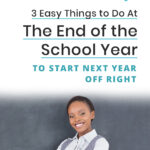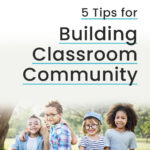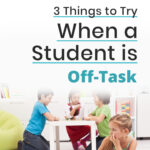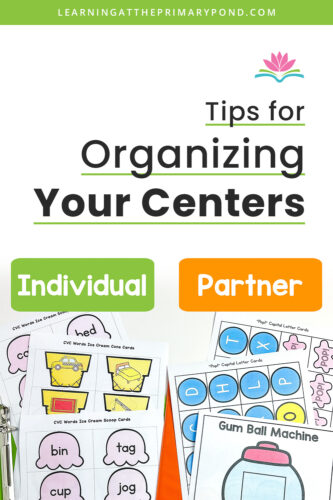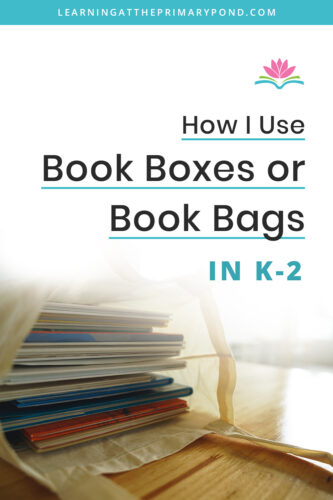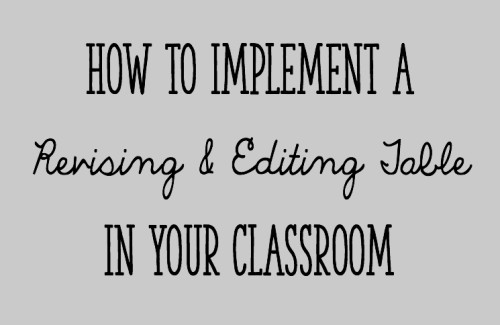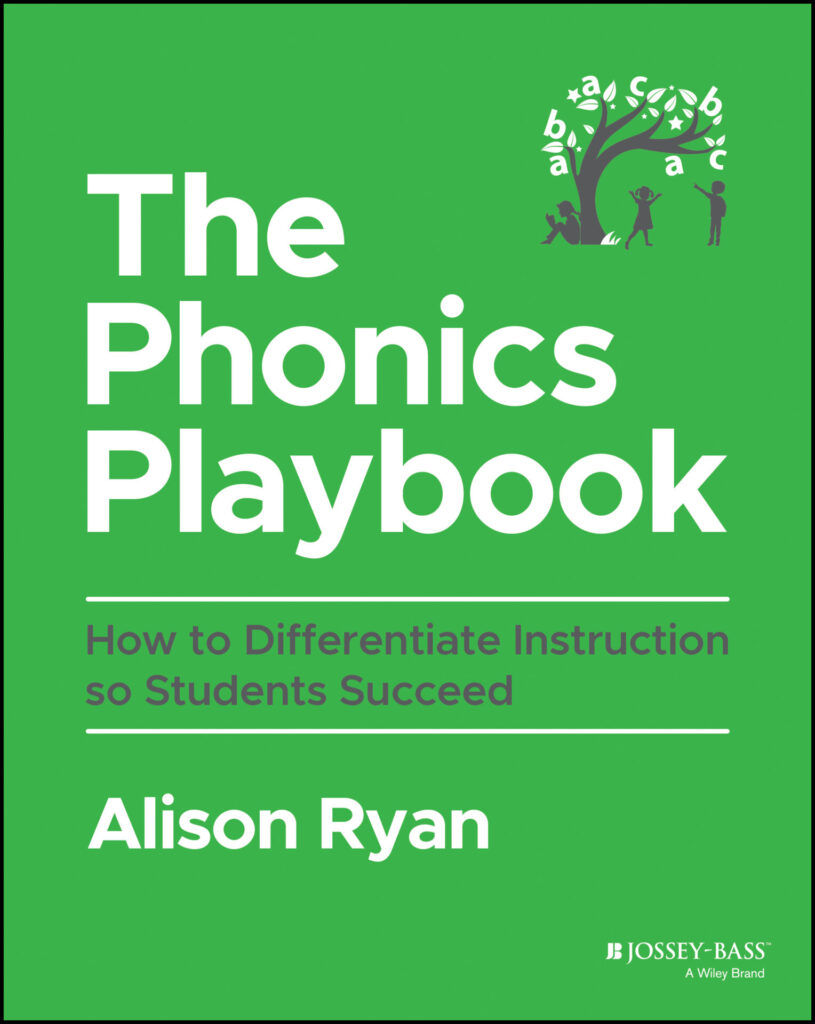Did you know that, on average, teachers make 1,500 educational-related decisions each day? That equates to about 4 decisions per minute. As a teacher, you probably don’t even notice many of these decisions. It could be things like:
- Am I going to stop this activity or let students keep working?
- Should I correct the word this student misspelled, or not?
- Which partner should this student work with?
- Who should I call on first to answer this question?
Also, our decisions affect how we as teachers feel about the day.
- Do I feel like things are going smoothly?
- Do I feel frazzled?
- Do I feel prepared?
- Do I feel like I can be flexible and adaptable?
The good news is that when we make good decisions, we have a huge impact on students and their learning trajectories. But because we have so many decisions to make, it’s important to work on the quality of our decision-making. When we make the “right” decision, that can make a huge impact on student learning. This doesn’t mean we’re doing extra things; instead, it’s about tweaking how we approach the decisions we’re already facing.
So in this blog post, I’ll present 5 different strategies that will help you make better decisions as a teacher!
By the way, this topic was inspired by a podcast I did for the Reading Intervention Collaborative. As a member, you get access to a new podcast each month! (And that’s just the tip of the iceberg. The RIC contains over 17 hours of training videos to help you become an expert at teaching struggling readers, plus teaching materials to use with them.)
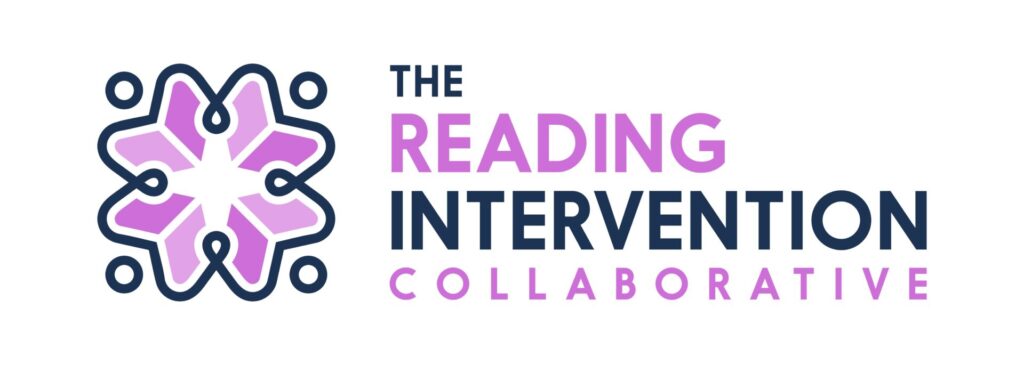
Let’s dive into these strategies!
Strategy #1: Intentionally carve out more thinking time.
You’ve probably heard of “think time” for students – where you give them a bit of time after you’ve asked a question. During think time, students can process the question and have time to formulate their answers.
And guess what? Teachers need think time, too – but in a different sense! You need time and mental space (time when you’re not doing anything else).
Research shows that our brain does its best thinking and problem-solving when it’s not even trying. If you’ve ever had a really good idea come to you when you’re showering, walking, or driving, then you know what this feels like! Research has also shown that creative thinking skills are often best later on in the day.
It’s important to pay attention to when your best ideas come to you. Then, try to schedule some quiet thinking time around that time of day. Even if it’s 10 minutes, it’s something!
While setting aside dedicated thinking time is very helpful, you can also pave the way for great ideas and problem-solving using a strategy that takes 0 extra minutes of your time!
Try this:
- Throw out a question to yourself toward the end of the work day. (Example: What else could I do to help this student with their decoding?)
- Let your mind do what it wants for the next couple of hours, without forcing yourself to think about your question or problem. (During this time, you might be driving or doing household chores, for example, but not doing schoolwork.)
- Let the answers flow!
I do this often. Sometimes, ideas come to me quickly, but other times, it takes a few days. Either way, it’s usually much more effective than sitting down and trying to force myself to come up with an idea when I’m already feeling really “stuck” and out of ideas!
With either of the above scenarios, you’re intentionally allowing yourself to have that think time, whether it’s physically scheduled into your day or just allowing yourself the mental space to do so. More intentional thinking time = making better teaching decisions, which is a win for you and for your students!
Strategy #2: Make sure you have the right data to make decisions.
Many times when I thought I knew what was going on with a student, the data I gathered ended up surprising me. Sometimes the required data by schools doesn’t always give us what we need.
For instance, I worked at a school that only did three benchmark assessments for reading and math throughout the year. This gave me some helpful information to make decisions, but definitely not a comprehensive amount. The reading benchmark assessment didn’t even provide information on which phonics skills students had mastered. If I had relied solely on those assessments, I wouldn’t have been able to pinpoint exactly which skills my students needed to learn.
Rather than relying solely on the tests you’re required to give, ask yourself this question: “What do I want to / need to find out about this child?” Then, choose the assessment(s) that will provide that data for you. (And of course, if your required assessments already happen to provide that data, great!)
Now that we’ve discussed student data, let’s move on to teacher data. Yes, I mean gathering data on yourself!!
What’s so interesting about our human brains is that we all create these stories about who we are. We have stories about who we are as teachers, how we behave in the classroom, etc.
The tricky thing is that sometimes these stories are partially false! We may be unintentionally making decisions in the classroom that are different from the ones we think we’re making.
Sound a little confusing? Let me give you an example. Let’s say that your principal asks you to reflect on your practices around choosing students to call on. In your reflection, you say to yourself that you’re calling on all students equitably. But then, when your principal comes to do an observation, they point out that you tend to call on certain students more than others. Oops!
We are ALL at risk of overlooking our own areas of weakness or believing stories about ourselves that are partially incorrect. The best way to assess our own practices is to gather actual data!
There are different ways to do this, but audio or video recording your teaching is one simple strategy to try. (Make sure this is okay with your administrators – more than likely it is, as long as you’re only using the recordings for your own purposes.) Through this, you can gather data such as:
- How long am I really spending on each section of the lesson plan?
- How much wait time am I providing students?
- Which students am I calling on to share their thoughts/answers?
- What is my teacher talk/student talk balance?
And actually, video or audio recording your instruction can also reveal information about students, too, especially when it comes to behavior.
Speaking of behavior, when a child is struggling with behavior issues, this is another great time to start gathering data. Jot down what happened before and after the challenging behavior. By collecting this type of data, you may notice trends that will help inform your future decisions.
In a nutshell, gathering the right data (about your students and even your own teaching) is key to making better decisions. We all like to think that we have a clear picture of what’s happening in our classrooms, but sometimes the data can paint a very different picture.
Strategy #3: Continue your professional learning.
Research is always changing! Continuing your own professional development and learning will help spark new ideas and help inform your decision-making.
This is one reason I created my Reading Intervention Collaborative membership!
With an RIC membership, you can continue learning with:
- Instant access to over 17 hours of short training videos that cover research-based, Science of Reading best practices for reading intervention
- Our library of printable reading intervention tools
- Access to a new, 30-minute audio training each month, so you can stay up to date on the latest reading research – even while you’re driving or doing chores!
There is so much available in RIC to help you keep up with your professional development – and it’s available to access on YOUR schedule, which is so helpful when you’re busy!
Read more about joining the Reading Intervention Collaborative here!
Strategy #4: Before making decisions, slow down and get input from others.
Asking for input can be personality-dependent. Some people ask others right away when they need advice. Others may just put their heads down and try to do it on their own.
Because teachers’ schedules are so busy, it can be easy as a teacher to just go, go, go, and not really slow down to ask others around you for input. Either way, it IS important to seek input from others.
A potential roadblock may be that during your own prep time, others are teaching or occupied. It can be tricky to find a common time to talk.
One way I get around this is by using voice messaging. If you value a particular co-worker’s opinion, send them a quick voice message about the decision you’re considering. (I use the free Voxer app.) That way, they can respond on their own time when it’s convenient for them (and also once they’ve had a bit of time to think through it themselves).
Sometimes you have trusted coworkers that you get great advice from, and sometimes you don’t. (This is especially true if you’re the only teacher in your position in the building.) Even if you do have an amazing team, it can still be helpful to get others’ perspectives.
This is one reason why I included live, bi-monthly coaching calls in the Reading Intervention Collaborative. This is another great place to come and get input from me and others! And calls are recorded for those who cannot attend live. The RIC also offers 24/7 access to a professional, private online community for asking questions, collaborating with your coaches, and connecting with other educators.
Strategy #5: Completely unplug from work.
If you’re constantly trying to do too much and your plate is too full AND you’re trying to make really important decisions… something has to give.
Let’s talk about the concept of “psychological detachment.” Psychological detachment means that you’re fully disengaging from something (e.g. work, in this example). When people are able to fully detach from work, it decreases the chance that they will get burned out.
This is, of course, harder than it sounds, especially with technology! When everything is still at your fingertips even after physically leaving work, it’s difficult to leave it alone and fully detach.
Let’s say you leave school at 3:00 pm, but you’re still thinking about work, checking email, grading papers, etc. This means you’re not fully detached.
I recommend deciding ahead of time and even setting an actual timer to determine what time you are going to detach. Sometimes it helps to do something intentional at the time you want to detach, like work out or make dinner, to signal that your detachment time is starting.
And remember…if you don’t intentionally detach, your chances of burnout will increase.
Conclusion
Instead of feeling overwhelmed by all of the decisions you have to make in a day, use some of these strategies to gain back control and feel empowered! I hope the tips in this blog helped with this.
For more support and learning, check out the Reading Intervention Collaborative as a way to get support when making some of those tough decisions, particularly around helping struggling readers!
Please let me know if you have any questions about anything I’ve shared here! If you want to save this post for later, here’s an image you can pin to your Pinterest account:
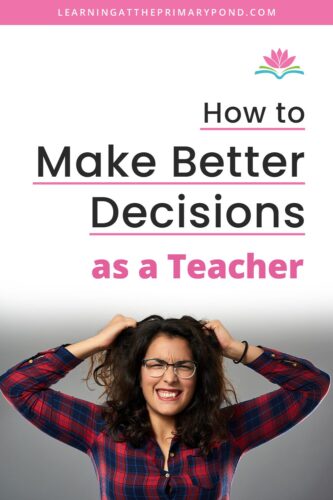
Happy teaching!

